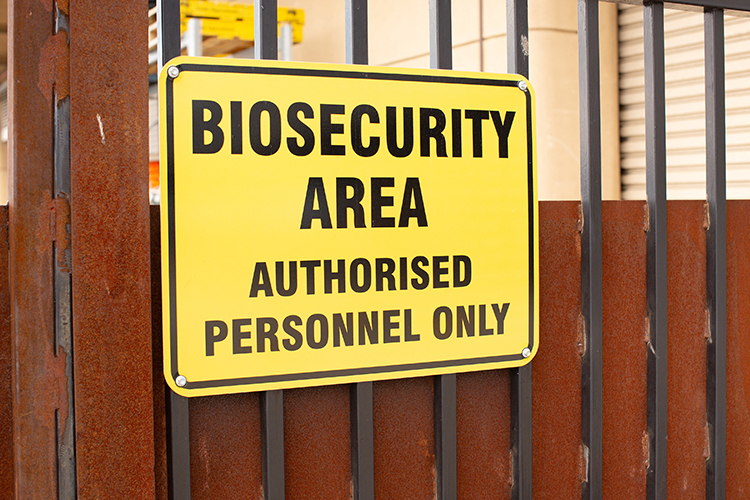
The 2001 emergence of foot and mouth disease rocked livestock producers in the United Kingdom and beyond with mass cullings and product movement bans. Fortunately, it never made its way to the U.S. But for a little over a year now, American agriculture has been dealing with its own crisis in the form of highly pathogenic avian influenza (HPAI). Millions of birds have been killed to prevent its spread, causing upheaval to poultry farms and processors.
To avoid similar destruction occurring in the dairy community, Jennifer Reed-Harry implored farmers and industry leaders at the Pennsylvania Dairy Summit to have a biosecurity plan in place and develop open communication channels that would limit the spread of such a disease.
Proper planning protects the investment you have made in your business and your animals, emphasized Reed-Harry, who helped lead the Keystone State through its crisis in her roles with the Center for Poultry Excellence and PennAg. “Have those hard conversations now because when it hits, you don’t have time to think of any of this,” she continued.
Byron Shaffer of Kreider Farms shared their experience with an outbreak of HPAI in a barn on one of their four layer/egg processing farms last April. The business also includes a 3,000-cow dairy and a milk processing plant.
A sudden spike in animal deaths prompted them to send samples off to be tested for HPAI, and when it came back positive, depopulation had to begin immediately. In total, the farm put down 1.35 million birds, which took about 15 acres to compost.
“It hurts your heart. But that was the right thing to do; it protected our neighbors,” said Shaffer.
Because of their quick response, the disease didn’t spread to any of their other barns. Shaffer noted that they had a biosecurity plan in place since 2015. However, that plan included using a landfill to dispose of birds, if necessary, but that wasn’t feasible with the numbers they ended up needing to cull. “Have a living plan,” was Shaffer’s advice for developing direction for a disease outbreak.
That plan needs to include things you might not have thought about, including suppliers you may need to utilize if your regular partners have contact with an infected farm, what people must visit your farm and where they have been, and what local officials to contact, said Reed-Harry. Talk to your farm team about disease spread and consider what you might do if animals need to be disposed of. At the very least, she recommended that every farm have personal protection equipment (PPE) and biosecurity signage on hand.
A disease outbreak is marked by stress, she admitted. There are many needs to think through, and having an idea of what you would do if faced with that scenario is the best way to go into the unthinkable with some bit of control. You may not be able to stop the disease, but you can be prepared to limit it.
“Do something even if you can’t do everything,” advised Shaffer.
To comment, email your remarks to intel@hoards.com.








